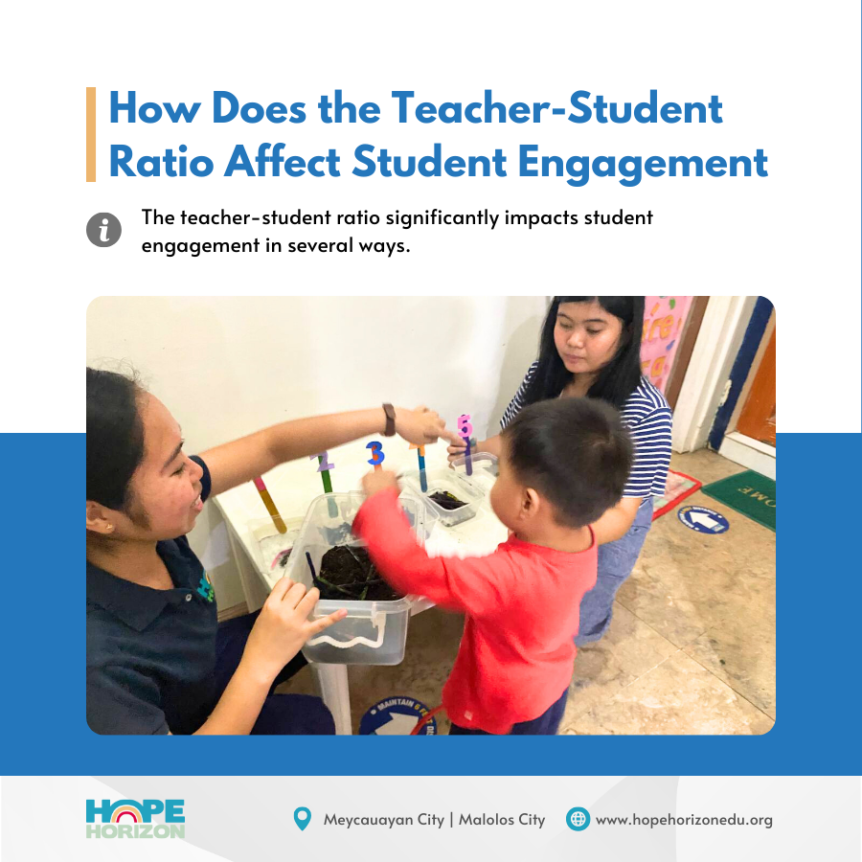The teacher-student ratio significantly impacts student engagement in several ways:
- Personalized attention. A lower teacher-student ratio allows teachers to provide more personalized attention and support to each student. They can tailor their teaching methods to individual learning styles, giving targeted help to struggling students and additional challenges to those excelling.
- Increased participation. In smaller classes, students feel more comfortable participating in discussions and activities. They are more likely to ask questions, express opinions, and engage with the material, leading to a more interactive and engaging classroom experience.
- Better feedback. With fewer students, teachers can provide more detailed and constructive feedback on student work. This helps students understand their strengths and weaknesses, allowing them to focus on areas for improvement.
- Stronger relationships. A lower ratio enables teachers and students to develop a greater sense of community and trust. Teachers get to know their students better, fostering positive interactions and creating a supportive learning environment.
- Improved classroom management. Smaller classes with fewer students minimize disruptions and create a more focused learning atmosphere. Teachers can more effectively manage their classrooms, dedicating more time to instruction and engagement.
- Enhanced differentiation. Teachers can more easily differentiate instruction in classes with a lower student-teacher ratio. They can adapt their teaching methods to cater to various learning styles and provide targeted support to students who need it.
Teachers in high student-teacher ratio classrooms face a multitude of challenges that can negatively impact both their effectiveness and the learning outcomes of their students. With a large number of students per teacher, it becomes very difficult for teachers to provide individualized attention, support, and feedback to each student. This makes it harder to identify and address the unique learning needs, strengths, and challenges of individual students. Additionally, high student-teacher ratios lead to a much greater administrative workload for teachers, as they have to spend more time grading assignments, processing data, communicating with parents, and completing paperwork. This can detract from the time available for lesson planning and instruction.Larger classes are more prone to disruptions and behavior issues, and teachers have to spend more time and energy on classroom management, which reduces the time available for actual teaching and learning activities.
Maintaining engagement and on-task behavior becomes more challenging, and students who struggle with confidence or are falling behind may become disengaged and reluctant to participate actively. The combination of a heavy workload, classroom management challenges, and inability to meet the needs of all students can lead to high levels of stress for teachers, negatively impacting their job satisfaction and performance, and contributing to higher teacher turnover and burnout rates. With less time available for lesson planning, individualized support, and active engagement, the overall quality of instruction may suffer in high student-teacher ratio classrooms, leading to lower student achievement and widening gaps between high and low-performing students.
In summary, a lower teacher-student ratio promotes student engagement by enabling personalized attention, increasing participation, providing better feedback, strengthening relationships, improving classroom management, and enhancing differentiation. These factors contribute to a more engaging and effective learning environment for students.

